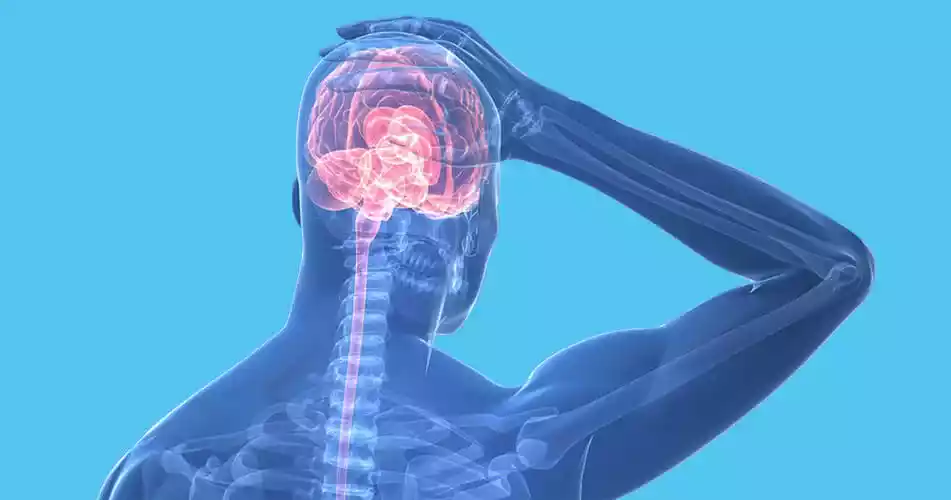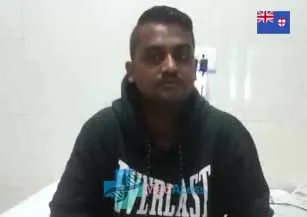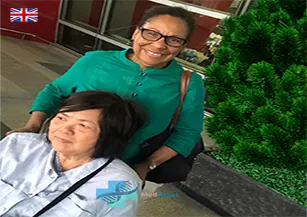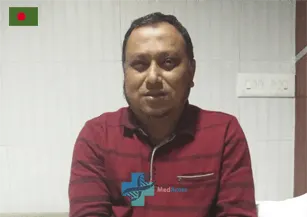What is Diffuse Axonal Injury (DAI)?
Injuries caused by Road Traffic Accidents are rapidly increasing nowadays, which causes a person becoming disabled or losing their life.
DAI (Diffuse Axonal Injury) is a traumatic brain injury caused internally by such road traffic accident. DIA is always severe and can be life-threatening as many parts of the brain are affected.

What are Common Causes of Diffuse Axonal Injury?
Cause of Diffuse Axonal Injury:
Acceleration and Deacceleration are the main cause of Diffuse Axonal Injury. The lesions occur in the white matter due to strong stress and shearing force over the neurons leading to the most common symptoms as follows –
- Shaken Body Syndrome
- Head Injury like the blow to the head
- Sport-related injuries
- Road Traffic Accidents
- Falls
- Shaken Body Syndrome
What are the Symptoms of Diffuse Axonal Injury?
The brain injury does not cause DAI due to a road traffic accident, and one can also suffer from DAI with Contusions or Concussions. So it is essential to identify the disease earlier; however, it is difficult too.
Few symptoms of DAI are as follows –
- Memory change
- Difficulty in speaking and reading
- Altered consciousness level
- Changed perception or cognition
- A sudden change in mood or personality
- Difficulty in recognizing people, person or words.
- Sometimes, with the severe progression of Diffuse Axonal Injury, the patient can go into the coma.
Sometimes, with the severe progression of Diffuse Axonal Injury, the patient can go into the coma.
Is there any Treatment Available for Diffuse Axonal Injury?
The treatment of Diffuse Axonal Injury is directly proportional to the severity of the disease. In cases with high degree DAI, the possibility of regaining consciousness is complicated, wherein the cases with low degree DAI have a better chance of recovery.
The main aim of the treatment is to reduce the brain swelling leading to the improvement of the patient's condition.
Many other treatment options include therapeutic ways to optimize recovery, such as occupational therapy, speech therapy, physical therapy, recreational therapy, which leads to significant improvements in the patient.
How Diffuse Axonal Brain Injury Diagnosed in India?
Radio graphically, computed tomography (CT) head findings of small hemorrhages to white matter tracts can also indicate diffuse axonal injury in the setting of appropriate clinical representation. Overall, CT head has a low yield in detecting diffuse axonal injury-related lesions. Usually, magnetic resonance imaging (MRI), specifically diffuse tensor imaging (DTI), is the imaging method of choice for diagnosis of diffuse axonal injury disease. A current report suggests that acute gradient-recalled echo (GRD) MRI will improve the detection of axonal injury in grade 3 diffuse axonal injury patients, indicating that it is most likely a better diagnostic tool.
Is Stem Cell Therapy Safe for Diffuse Axonal Injury?
Stem Cell Therapy Is 100% Safer for the Treatment of Diffuse Axonal Injury. Very Much useful And Potent than The Allopathic Medicine. Stem cell therapy for Diffuse Axonal Injury in India Is Very Safe and Effective by best Diffuse Axonal Injury doctor in India.
Is Stem Cell Curable for Optic Diffuse Axonal Injury (DAI)?
Stem Cell Therapy has shown impeccable results in the DAI patient’s condition.
Recent research and studies in stem cell technology have proved that Stem Cell Therapy for Diffuse Axonal Injury leads to improvement in the blood flow in the brain, promotion of the angiogenesis leading to enhancement of the oxygen supply to the brain. Hence, Stem Cell Therapy leads to the healing and generation of the positively effective mechanisms in the brain after the stem cell administration.
MedAcess has developed the Stem Cell Therapy program to treat various conditions. During our stem cell treatment, each patient receives 200 – 300 million stem cells. The quantity of the stem cells not only covers daily losses but exceeds them a million times. Thus, the source of the stem cells, which is practically lost for the last 15 – 20 years, is recovered and restored. After our stem cell infusion, various organs get rejuvenated and they get renewed because the new and active stem cells completely replace the old and damaged ones.
Changes After Stem Cell Therapy
- Corrected consciousness level.
- Improved perception or cognition.
- Stability in mood or personality
- Improvement in recognizing people, persons, or words.
- Reduced risk of coma.
How much does the Cost of Stem Cell Treatment Axonal Brain Injury in India?
Diffuse Axonal Injury stem cell treatment cost is a very complicated process. As the price is not controlled in most of the parts of the globe for stem cell therapy, people from across the world prefer India as it has become the pioneer of medical tourism for affordable stem cell therapy. The therapy cost in India is significantly less of what it would cost in the western hemisphere, along with the waiting period and prohibitive logistics cost.
Stem cell therapy cost for Diffuse Axonal Brain Injury treatment in India starts from $1,000 to $1,500 per dose, depending on the upon various medical factors like, patient’s condition, number of doses, type of stem cell treatment, number of stem cells required, pre-treatment investigations, etc.
Low Cost stem cell therapy for Diffuse Axonal Injury in India is also a factor that is giving new hope to patients who need Stem Cell Treatment. The Cost of Stem Cell Treatment in India is significantly Low, but the medical services provided by the hospitals are top-notch with International Medical standards and latest technologies at MedAcess Stem Cell Center India.
What are the Success rates for Diffuse Axonal Injury (DAI)?
After the stem cell therapy for Diffuse Axonal Injury, the patient gets desirable Changes and excellent results. Till now, we have observed that around 80% of Diffuse Axonal Injury patients who are treated using Stem Cell Therapy have shown significant results like a complete stoppage in the progression of Diffuse Axonal Injury. Regeneration of damaged neurons, enhanced signaling, better control on Diffuse Axonal Injury, no Need help in walking or sitting, refined quality of life, improved lifestyle, improved flexibility, etc.
Why India is the Best Place for Diffuse Axonal Injury Stem Cell Treatment?
MedAcess has an excellent and successful career and vast experience in treating such conditions with excellent results. We are well equipped with the latest stem cell technology and the well-versed team of stem cell scientists and doctors. We always keep updated with the latest research and studies in the field of stem cell therapy, and we are improving our skills and knowledge continually. This is the reason we are one of the leading stem cell treatment centers in India.
Why Choose MedAcess for Axonal Diffuse Injury Treatment?
Our clinic has advanced the curriculum of Adult Autologous Stem Cell Treatment, treating several conditions, one of them being Diffuse Axonal Injury. In the operation of stem cell therapy, 200-300 million cells are implanted into the patient’s body. These cells come from the patient’s body itself that wipe out the side effects and make the entire procedure very fast and straightforward. Stem cells are a part of the human repair system. Naturally, that is why they are suitable for conducting deteriorated areas, in this case, chiefly brain tissue.
MedAcess has been working for six years and our successful clinical practice made each individual in our team professionals in the restoration and recovery of the body. Our experts preclude several severe chronic and age-related diseases. Working with the latest technologies, we are continuously recovering our knowledge, advancement skills and accession in this field.
Undergoing therapy in our center, patients receive stimulated autologous mesenchymal stem cell treatment. The cells are seized from adipose tissue and bone marrow, depending upon the patient.
We take into review the patient’s condition, his or her inquiry, and disorder history.
The entire stem cell method is concluded within a day. It is thoroughly safe, fast, understandable and painless. After stem cells are derived from either the patient’s abdominal tissue, bone marrow, they are separated and stimulated, and after that, they are put back into the body using a simple IV dip.
In the next 2-4 months, after the therapy, recoveries are slowly framed up. Symptoms decline and are contradicted, which is possible only with this therapy. During this time, our experts go on receiving the information from the patient’s tests and motivate them with advice. The 6-month medical follow-up follows the Adult Autologous Stem Cell Treatment.
Advantages of Stem Cell Therapy at MedAcess:
- Zero side effects and rejections free
- Zero risks of Allergic or Immune reactions
- No risk of transmissible disease
- No oncological complications
- Long lasting results
FAQ's -
For some patients, recovering from a diffuse axonal brain injury is possible. But there is no guarantee of such damages. The severity of the brain damage, which areas of the brain are affected, your treatment, and many other factors can affect whether or not you make a full recovery but Stem Cell Therapy can still be a good option for your treatment.
The immediate plan of action is needed in the case of a Diffuse Axonal Injury is to reduce any swelling of the brain, as this can cause more damage. In selected cases, a dose of steroids will be given to reduce the swelling in the brain tissue. There is no surgery available to a patient who has sustained a DAI. But there is one treatment option still available for Diffuse Axonal Injury that is Stem Cell Therapy for Diffuse Axonal Injury.
For some patients, recovering from a diffuse axonal brain injury is possible—but there are no guarantees with such injuries. Many patients who suffer from extensive brain injuries such as this may have to struggle with the ongoing brain and nervous system issues for the rest of their lives.
Diffuse axonal injury (DAI) is a kind of traumatic brain injury (TBI) that is resulted caused by blunt trauma to the brain [1]. In the United States itself, traumatic brain injury is a massive cause of death and disability among children and young adults. The Center for Disease Control and Prevention (CDC) estimates that there are over 1.5 million reported cases of traumatic brain injury every year in the United States. Traumatic brain injury is classified as mild, moderate, and severe based on the Glasgow coma scale (GCS). Traumatic brain injury patients with GCS of 13 to 15 are classified to be mild, which includes the majority of traumatic brain injury patients. Patients with a GCS of nine to 12 are considered to have a moderate traumatic brain injury, while patients with GCS below eight are classified as having a severe traumatic brain injury.
Many patients do not survive severe head injuries. A significant number of patients who do sustain the injury are left unconscious and never regain consciousness. Of the few who do wake up, many are left with long-term problems even after rehabilitation.
However, there are differing levels of severity of DAI, with concussion being considered one of the milder forms. Thus, complete recovery is possible in very mild cases.


